Updated Jan 27: Classical and choral music about peace and war
(updated January 2016 — 19 recent additions in italics: 13 works of music and six publications)
by music co-ordinator, Jeff Piker
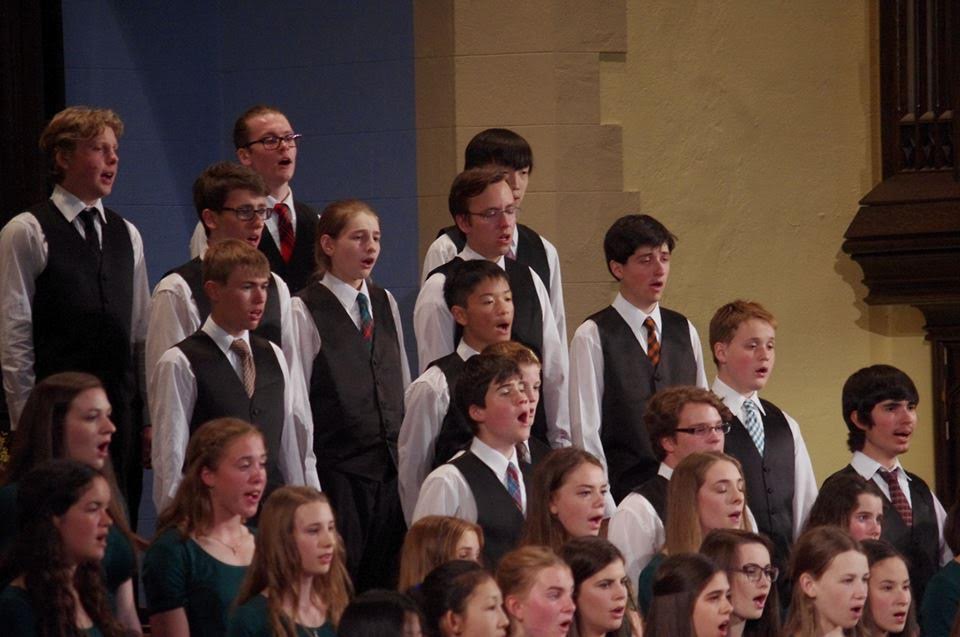
Cantabile Choirs of Kingston, Ontario, often perform music about peace and war. Pictured here is the combined young women’s choir and young men’s chorus. Photo by Hollie Stewart.
Introduction
Many months ago I composed a list of ‘Songs about peace and war’. (In updated form, it is now posted on this website here.)
As I worked on that earlier list, I realized that another related to music about peace and war might also be useful — that is, about classical and choral music. I thought it best to separate the two lists, because the music differs in some basic ways — although in others it is similar.
Music of all kinds can make valuable contributions to peacework and to the lives of peace-workers. Like the other list, this one is intended to encourage and assist peace-workers to find ways to include music in their efforts.
I have loved classical and choral music ever since I was a boy growing up in the 1950’s. A challenge for me working on this list, however, has been that I’ve had little direct, personal involvement with, and have not really gained much depth of knowledge about, such music. So this list has taken longer to generate than the other, and at this point it contains fewer entries.
Another word of caution concerns my use of the phrase, ‘choral music’. Any of the songs on the other list can be performed by choirs — and certainly many have been. In that context, they also become ‘choral music’. I regret that I cannot clearly explain what I mean by the phrase here — except to say, the choral music on this list has been composed especially for choirs, while the other songs have not — and also to suggest, this choral music is more ‘serious’ while the other songs are more ‘popular’.
Different from the other list, this one contains brief notes about the composers and the musical compositions after each item. (Canadian composers are identified in boldface.)
On-line versions of most of these works can be found by searching on Youtube. To assist your search, I have created a Youtube ‘channel’ which contains good-quality links to all the items I could find there — you can connect to that Youtube ‘channel’ here. (The most recently added pieces will be found at the end of the ‘channel’.)
A challenge for groups wanting to perform this music is to find free sources of scores and texts. Music directors of local choirs, orchestras and schools can provide valuable assistance. On-line searching (for example, for ‘free choral music’) will be helpful — one useful on-line source is the Choral Public Domain Library, and there are others.
The list is a work-in-progress. To get it to this point, several resources were consulted, as well as people familiar with classical and choral music about peace and war. Thanks to Bronek Korcznski (co-chair of PeaceQuest-Kingston steering committee), who encouraged production of the original list. For the additions on this updated version, thanks to Evan Mitchell (musical director of Kingston Symphony) — and special thanks to Mark Sirett (artistic director of Cantabile Choirs of Kingston) for numerous suggestions and ongoing support.
Certainly there are gaps. I’m hoping to locate additional items as time goes by, so the list will be further updated periodically. If you have pieces to suggest being added, or comments to make about what’s already there (including about the ‘notes’ I’ve provided with each item), please do it: either in a ‘comment’ in the space provided at the end of the website list, or by sending your ideas to the music co-ordinator of PeaceQuest-Kingston: jpiker@kingston.net
Thanks!
Publications of choral music about peace and war
Before you get to the total list of classical and choral music, here is a short list of useful publications of choral music about peace and war. A link is attached to each title on the list, which takes you to a website that provides information. Thanks to Mark Sirett for most of these suggestions, and also to Sister Marie Dundon (of Kingston’s Sisters of Providence Motherhouse).
Boosey and Hawkes: World War and Peace Anniversaries
Boosey & Hawkes is a British music publisher purported to be the largest specialist classical music publisher in the world. This page at its website lists 13 major classical works about peace and war for which it can provide scores (either on-line or for purchase).
Choral and classroom songs about peace
Twelve pages of scores and texts for choral works on the theme of ‘peace’ (30 pieces per page) , for choirs and classrooms — published by the Hal Leonard Corporation (‘the world’s largest music print publisher’ — in Milwaukee, Wisconsin).
ChoralNet: Peace, Freedom and Justice
ChoralNet is a website operated by the American Choral Directors Association. A long and detailed posting by member Greg Bartholomew identifies a variety of suggestions from locations in the U.S. and elsewhere, along with detailed notes and contact information.
ChoralNet: Repertoire suggestion — Finale pieces with a ‘peace theme’
Responding to a request from the Stambaugh Chorus (Youngstown, OH) for ideas about 3-5-minute finale pieces with a ‘peace theme’ for an upcoming choir festival, composers, choir directors, music teachers and others provide a long list of suggestions — including background notes and information.
Songlines: Hymns, Songs, Rounds and Refrains for Prayer and Praise
The book contains 100 songs, many about the topic of ‘peace’. It is in two sections: the first has the words of each song, along with some notes about where and for whom the song was written and how it can be performed; the second section has the musical notation (a full melody line, piano score and guitar chords in many cases). The author is Miriam Therese Winter, a religion professor at Hartford Seminary. She has recorded a dozen albums in three repertoires: her early folk music, her feminist music, and her several hymn texts set to standard hymn tunes. Publisher is Crossroad Publishing Company in New York.
Songs of Peace, Hope and Love — A Big Note Songbook
There are 34 songs by various composers, arranged for piano, vocals and guitar. A link at the website shows the entire list of songs. Published by Hal Leonard Corporation (‘the world’s largest music print publisher’ — in Milwaukee, Wisconsin).
Classical and choral music about peace and war
John Adams (music) and Walt Whitman (words) — The Wound Dresser (1989)
The words are excerpts from Whitman’s poem of the same name (1865), based on his experiences as a hospital volunteer during the U.S. Civil War. Adams (born 1947) wrote the music for chamber orchestra and baritone singer. He is a U.S. composer of classical music and opera — he won the Pulitzer Prize for music in 2003. He has been especially concerned about suffering by — and injustice toward — women around the world.
Allan Bevan — Peace (aka, My soul there is a country — 2001)
Bevan (1951) is an award-winning composer, specializing in choral music. He studied music at U. of Windsor and Queen’s, U. of Alberta (M. Mus.) and U. of Calgary (Ph.D.). He won the 2002 Ruth Watson Henderson Award for his motet, ‘Peace’.
Marc Blitzstein — The Airborne Symphony (aka, Symphony: The Airborne — 1946)
Blitzstein (1905 – 1964) was a composer, lyricist and librettist from the U.S. This piece was written for narrator, vocal soloists, male chorus and large orchestra. While having symphonic elements, it models itself largely after the choral cantata. The symphony is divided into three parts and conveys a dramatic connection between the birth of flight and the role of airplanes in modern warfare. Despite its rousing patriotism, the composer was careful to end the work with a plea to reject the false sense of moral superiority that victors inevitably display.
Benjamin Britten — War Requium (1961-2)
The British composer, conductor and pianist (1913-1976) wrote this masterpiece as a profound and eloquent testament to the horrors of war. It combines his powerful music with the Reqium Mass and the haunting images of W. W. I soldier-poet, Wilfred Owen. The work is scored for soprano, tenor and baritone soloists, chorus, boys’ choir, organ and two orchestras (a full orchestra and a chamber orchestra). It was first performed in 1962 as part of the consecration of the new Coventry Cathedral, which was built after the original fourteenth-century structure was destroyed in a W. W. II bombing raid.
John Burge — Mass for Prisoners of Conscience (1989)
Burge (1961) is a pianist, teacher and composer, living in Kingston. He is full professor at Queen’s School of Music, where he has also been director; he was awarded a Queen’s University Excellence in Research and Scholarship Prize in 2013. This piece was based on writings compiled by Amnesty International. In addition to the choir and instrumen-
tal ensemble, the work has prominent solos for baritone, mezzo-soprano and a child vocalist. In 2009, it was featured in performances in Kingston and Toronto by vocal and orchestral students joinly from Queen’s and the University of Toronto. Soon after, the work had its U.S. premiere at the Lincoln Centre in New York City.
John Burge — Flanders Fields Reflections (2005)
This piece was commissioned by Sinfonia Toronto, in connection with its 2005 season’s theme of war and peace. About it, Burge has written: “It dawned on me that a perfect vehicle would be to musically interpret some of the important lines from John McCrae’s famous poem, ‘In Flanders Fields’. The resultant musical work is in five movements; when people hear it, they seem drawn to the slowly unfolding sadness of the fourth movement, which is titled, ‘Loved and Were Loved.’”
Martha Hill Duncan (music) and Janet Windeler Ryan (words) — War Memorial (2008)
This piece was originally composed as a piano solo, evoking distant drums, cannons and church bells and honouring the fallen in war. For a 2012 Stratford, Ontario, musical commemoration of the War of 1812, Ryan (poet, lyricist and pianist) added words. Duncan is a composer, lyricist, pianist, music teacher and choir director. She moved to Canada from the U.S. in 1982.
Michael Eglin (music) and Sara Teasdale (words) — Barter (2010)
Teasdale (1884-1933) was a Pulitzer-prize-winning lyric poet in the U.S. Eglin (born 1975 in Niagara Falls, N.Y.) has been a conductor, singer and composer; he lives in Santa Barbara, CA. Her poem celebrates the beauty of the world: “For one white singing hour of peace / Count many a year of strife well lost….” A new arrangement by Kingston’s Mark Sirett was published in 2015 (for choir, piano and optional string quartet).
Gerald Finzi — Requium da camera (1920’s)
This piece, one of Finzi’s early works dealing with the subject of the futility of war, was written in memory of Ernest Farrar, his composition teacher who was killed at the end of the First World War. The British composer (1901 – 1956) scored it for orchestra, chorus, baritone soloist and spoken narration.
Henryk Gorecki — Symphony No. 3 (aka, Symphony of Sorrowful Songs — 1976)
This is perhaps the best-known work by the noted Polish composer (1933 – 2010). A solo soprano sings a different Polish text in each of the three movements. The first is a 15th-century Polish lament of Mary, mother of Jesus; the second is a message written on the wall of a Gestapo cell during World War II; and the third is a Silesian folk song about a mother searching for her son killed by the Germans in the Silesian uprisings. The dominant themes of the symphony are motherhood and separation through war.
Arthur Honegger — Symphony No. 3 (aka, Symphonie Liturgique — 1945-6)
This symphony was composed in the aftermath of W. W. II and is one of Honnegger’s best-known works. It is in three movements, each named after parts of the Reqiem Mass. The composer wrote extensive commentary on the work, making explicit the music’s connection with the horrors of the war and his desire for peace.
Herbert Howells — O Pray for the Peace of Jerusalem (1941)
Howells (1892 – 1983) was an English composer, organist and music teacher; he was especially famous for his large output of Anglican church music. This piece (for mixed choir and organ accompaniment) is one of four anthems Howells composed which are based on Psalm 122. It has a simple musical texture with long, expressive, unison phrases which establish a contemplative mood – at once both a pilgrimage and a prayer.
Karel Husa — Music for Prague 1968 (1968)
Husa (1921) is a Czech-born classical composer and conductor. He moved to the U.S. in 1954 and was professor of music at Cornell University until his retirement in 1992. This piece was originally written for symphonic band and later transcribed for full orchestra. He had been deeply moved by how the Prague Spring reform movement was crushed by the Soviet Union — this is his memorialization of those events.
Karl Jenkins — The Armed Man (2000)
Jenkins, a Welsh musician and composer (born in 1944), wrote this ‘Mass for Peace’ (for chorus and orchestra) not only to describe the horrors of military conflict, but also to offer the hope of peace as an end to warfare. With over 1200 performances since its premiere, it is one of the most frequently programmed new works for choir and orchestra of recent decades.
Karl Jenkins — The Peacemakers (2011)
In this recent choral work, Jenkins features texts from Gandhi, Martin Luther King, the Dalai Lama, Nelson Mandela, Anne Frank and Mother Teresa, as well as words from the Bible and the Qur’an, with some new text specially written by Terry Waite (British humanitarian and writer). In seventeen movements, it includes parts for orchestra and three separate choirs. (For those thinking of performing it locally, don’t worry — Jenkins often allows performances by smaller groups.)
William Jordan — City of Peace: IV. Psalm 120 (2002)
Jordan (1951) was born and raised in the U.S. and moved to Canada in 1978 to join the music department at the U. of Calgary. He has composed music for orchestra, chamber ensemble, piano, voice, choir, and the musical stage. This piece, for women’s choir and guitar, was submitted to the 2002 gathering of ‘Waging Peace Through Singing’ (a project of iwagepeace.com), in the ‘Emerging Composers’ category — along with more than 700 entries from thirty countries.
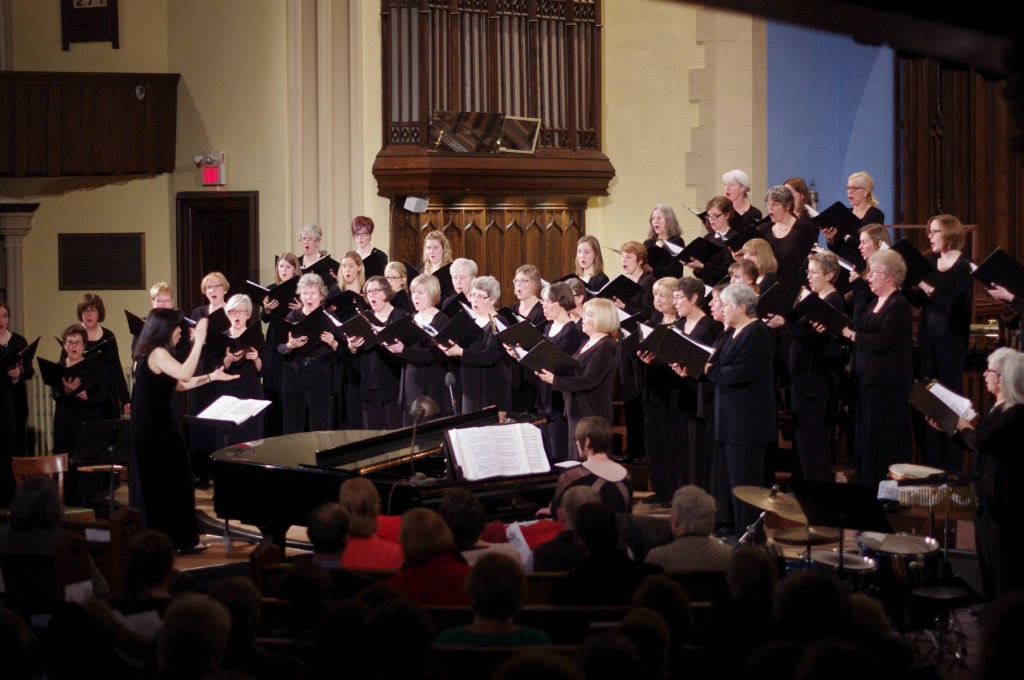
Cantabile Women’s Chorus of Kingston, Ontario. Photo by Hollie Stewart.
Sean McLaughlin (words) and Jan Sandstrom (music) — Across the bridge of hope (1998)
The words of this song are actually a poem written by a 12-year-old boy, Sean McLaughlin, in Northern Ireland. Not long after he wrote the poem, he was killed in a bomb explosion related to the ‘troubles’ there. The words were later put to music by Jan Sandstrom, a Swedish classical music composer. The song is on this website’s other list of ‘Songs about peace and war’. Because I first heard the song not long ago at a concert by Kingston’s Cantabile Choirs (the women’s chorus performed a lovely version), it is also included on this list.
Darius Milhaud (music) and Paul Claudel (words) — Cantata de la paix (1937)
Milhaud (1892 – 1974) was commissioned to write a work to celebrate the 75th anniversary of the birth of French statesman and Nobel Peace Prizewinner, Aristide Briand (1862 – 1932). He asked Claudel (1868 – 1955), his friend and man of letters, to come up with text for the work. The Scripture verses are ordered as a dialogue between God and man. Milhaud set the words of God for children’s voices; men are given the words of the prophets; for the people’s words, the men, soloists and full chorus are used together. He chose to write for La Manécanterie des Petits Chanteurs à la Croix de Bois (Choir School of the Little Singers at the Wooden Cross) — it was located in one of the poorest sections of Paris and accepted any child who wanted to sing, regardless of ability. Milhaud was a French composer and teacher, one of the most prolific composers of the 20th century. Claudel was a French poet, dramatist and diplomat; he was famous for his verse dramas which often conveyed his devout Catholicism.
Andrzej Panufnik — A Procession for Peace (1982-3)
Panufnik (1914-1991) was a leading Polish composer and conductor; he lived the last few decades of his life in Great Britain, where he wrote this piece, especially for young musicians. About it, he wrote: “This work is a kind of symphonic prelude, written on two planes: the wind instruments and strings play a hymn-like chorale in the metre of 3/4, while the beat of the drums and the timpani reflect the character of a very slow, solemn march in the metre of 2/4….I composed this short orchestral work having no affiliation to any peace organisation nor to any political party. I furnished it with this dedication: ‘To peace-loving people of every race and religion, of every political and philosophical creed.'”
Krzysztof Eugeniusz Penderecki — Threnody to the victims of Hiroshima (1960)
Some call Penderecki (born in 1933) ‘Poland’s greatest living composer’. This is a musical composition for 52 string instruments. It took third prize at the Grzegorz Fitelberg Composers’ Competition in Katowice in 1960. The piece swiftly attracted interest around the world, won a UNESCO award in 1961 and made its (then) young composer famous. (The word, ‘threnody’, means: ‘ode or song of lamentation’.)
Francis Poulenc (music) and Paul Eluard (text) — Figure Humaine (1943)
The piece is a cantata for double choir, composed of eight songs which together express a hymn to freedom and victory over tyranny. French composer and pianist, Poulenc (1899 – 1963), first met French poet, Eluard (1895 – 1952), in 1916 or ’17. The poems of the cantata are among the most famous the poet ever wrote. Although composed in France during the German occupation of W. W. II, the work was successfully sent to London, allowing its first performance in 1945 by the BBC. In an interview at the time, Poulenc said he hoped that this “…act of faith can be expressed without instrumental aid, for the only medium of the human voice.”
Kevin Puts (music) and Mark Campbell (libretto) — Silent Night: An opera in two acts (2011)
The libretto of this opera is based on the Christmas truces of December, 1914. Puts (1972) is a major U.S. composer of operatic and symphonic music; he is currently composer-in-residence at the Fort Worth Symphony. Campbell is a highly-regarded U.S. librettist and lyricist. About the message of Silent Night, Campbell has said: “War is not sustainable when you come to know your enemy as a person. When you see that the person you might be shooting has a child or a wife or has this life at home and they’re just not the enemy, then it becomes very difficult if not impossible to sustain war.”
Maurice Ravel — Le tombeau de Couperin (aka, At the tomb of Couperin — 1914-7)
Ravel (1875 – 1937) tried to enlist in the W. W. I to become a flyer, but because of his age and weak health he became a truck driver and was stationed at Verdun. He composed this six-movement piano suite both as a sign of respect for the18th century Baroque era, and also as a tribute to a friend who died in W. W. I. When he was criticized for the lightness of tone in music commemorating a fallen friend, he is said to have replied, ‘The dead are sad enough in their eternal silence.’
John Rutter — Lord, make me an instrument of Thy peace (aka, Prayer of Saint Francis – date unknown)
Rutter (1945) is an English composer, conductor, arranger and record producer — mainly of choral music. His music is popular, especially in North America (“consumate craftsmanship”, etc.) — in the U.K there is a more mixed reception (e.g., “the most gifted composer of his generation”, and “hard to take seriously”, etc.). He scored this piece for soprano, alto, tenor and bass parts plus organ, harp and strings. The so-called ‘prayer of St. Francis’ is a widely known Christian prayer, often questionably attributed to St. Francis of Assisi (the prayer in its present form cannot be traced back further than 1912): “Lord, make me an instrument of thy peace. Where there is hatred, let me sow love….”
Murray Schafer — Threnody (1966)
Schafer (born in 1933) is a Canadian composer, music educator and environmentalist. As an adjunct to his teaching, he composed choral and orchestral works for youth: ‘Statement in Blue’, ‘Threnody’, and ‘Epitaph for Moonlight’. In 2009, he received the Governor General’s Performing Arts Award for Lifetime Artistic Achievement; in 2013, he was made a Companion of the Order of Canada for his contributions as an internationally renowned composer of contemporary music. ‘Threnody’ is a moving and bitter commentary on the bombing of Hiroshima and Nagasaki, based on comments by survivors. It provides powerful insights into the horrors of nuclear war. (The word means: ‘ode or song of lamentation’.)
Jim Scott — Voices of Peace (2013)
This is a 3/4 gospel song which has been recorded with a large choir and band. Scott lives in Shrewsbury, MA. He is a well-trained, long-time composter, performer and musical activist. For more than thirty years his music has celebrated the earth, social justice and peace.
Dmitri Shostakovich — Symphony #7 (c. 1939-’41)
Shostakovich (1906 – 1975) dedicated this symphony to the city of Leningrad, because of its dramatic resistance to Nazi totalitarianism and militarism. It is still regarded by many as the major musical testament to the estimated 25 million Soviet citizens who lost their lives in W. W. II. It is one of the longest symphonies in the classical repertoire. (Note: the excellent recent novel, ‘The Conductor’, by the New Zealand writer, Sarah Quigley, tells a moving story of the composition and first performance of this symphony within the hell that was the siege of Leningrad.)
Jill Ann Siemens — Sempre vicino (aka, A child’s prayer for peace — 2001)
Siemens’ piece won a prize at the 2002 International Song of Peace Convention in Tipperary, Ireland. It was later recorded and widely performed by The Canadian Tenors, a group she founded. She is a music teacher, composer and concert organizer who lives in Victoria, B.C.
Jonathan Wilcocks — Lord, make me an instrument of Thy peace (date unknown)
Wilcocks (1953) is an English composer, mainly of choral music. He has been music director of several major English choral groups. This piece is one of many shorter (sacred and secular) choral works that he composed. It is scored for chorus with organ/piano, and for soprano/alto voices with organ/piano. The so-called ‘prayer of St. Francis’ is a widely known Christian prayer, often questionably attributed to St. Francis of Assisi (the prayer in its present form cannot be traced back further than 1912): “Lord, make me an instrument of thy peace. Where there is hatred, let me sow love….”
Ralph Vaughan Williams — Dona Nobis Pacem (1936)
British composer, Vaughan Williams (1872 – 1958), produced this plea for peace by referring to recent wars during growing fears of a new one. His texts were taken from the Mass, three poems by Walt Whitman, a political speech and sections of the Bible. The work is scored for chorus and large orchestra, with soprano and baritone soloists, ‘Dona nobis pacem’ (‘Give us peace’) is repeated throughout in various settings.
Ralph Vaughan Williams — Symphony No. 3 (1922)
This work was originally called ‘A Pastoral Symphony’. It was inspired by events in France in the summer of 1916. Williams had been an ambulance driver there in the Royal Army Medical Corps. Instead of expressing the horror of war in music, Vaughan Williams chose to remember a peaceful scene of driving to the top of a hill to watch the sun set on a rural landscape. The piece includes sounds of a bugler practicing below and a wordless soprano voice (perhaps a girl singing in the field), producing music of natural tranquility and peace inspired within a time of man-made destruction and chaos.
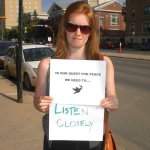
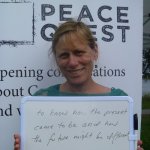
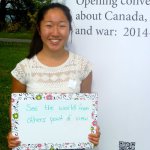
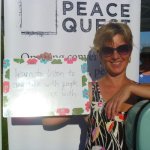
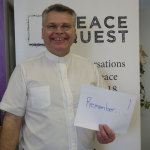
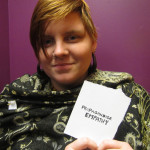
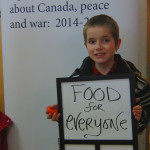
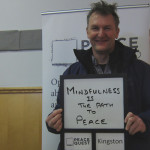
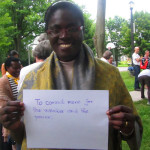
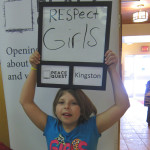
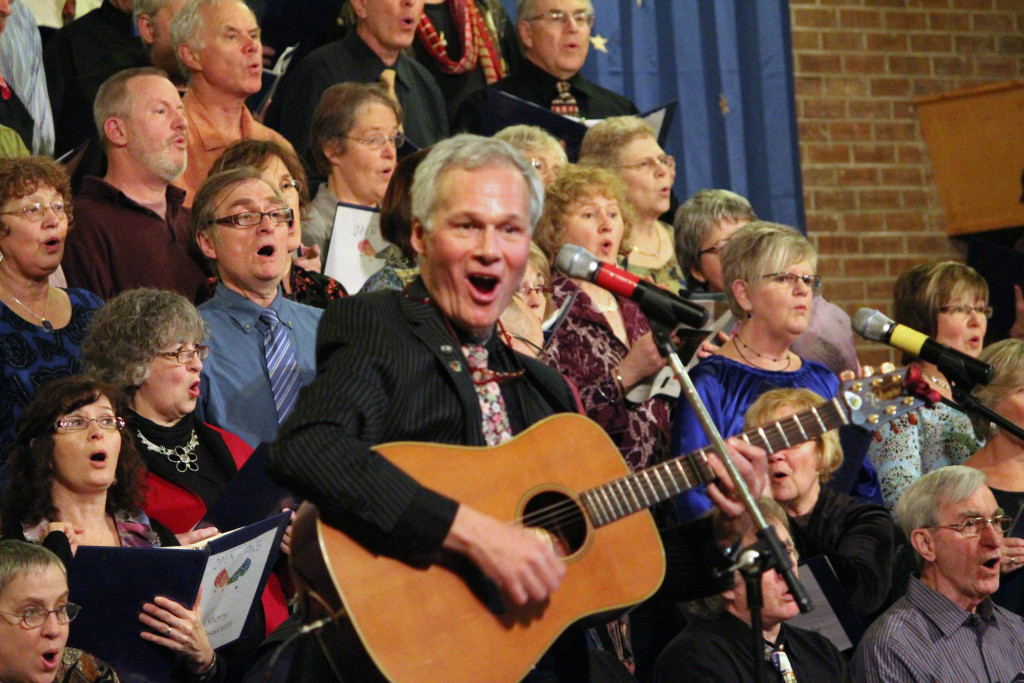
Richard Mercer
February 2, 2016 @ 12:45 am
You might consider adding “Afghanistan – Requiem for a Generation” by Jeffrey Ryan to this list.
Jeff Piker
February 2, 2016 @ 8:25 pm
Thanks so much, Richard, for your suggestion. It’s a piece I didn’t know about until now. I haven’t listened to it yet, but I’ve just been learning about it at Jeffrey Ryan’s website — his own words:
‘Almost every generation has its war (or wars) that it carries as a scar forever. For (Suzanne) Steele (who wrote the text for the piece), this work is “a love letter. Not just to one person…but to each of us, to our country, and to a generation that will be paying for this war emotionally or financially (looking after the injured and next of kin) for another generation.” Afghanistan: Requiem for a Generation marks one particular war for one particular generation, but its message is universal and timeless.’
You can bet it will be on this list the next time it’s updated, a few months down the road.
Richard Mercer
February 3, 2016 @ 12:01 am
If you cannot find a copy to listen to, I might be able to provide one.
Jeff Piker
February 4, 2016 @ 5:28 pm
Thanks for your kind offer, Richard. I see that it is on Youtube — performed by the Calgary Philharmonic Orchestra, which commissioned the piece originally — I’m guessing this is its premiere performance — here is the link for people who might be interested:
https://www.youtube.com/watch?v=vId1m4KFzSQ .
When the classical/choral list next gets updated, this Youtube version will be added to the Youtube channel for pieces on the list. I see that also on Youtube is an interview with Jeffrey Ryan (I think by the Canadian Music Centre), about his composition of the Requiem.
steve heitzeg
March 2, 2016 @ 3:26 pm
Thank you for this list and history. It really reaffirms the notion that
music can and does serve the cause of peace. It is the arts that make
positive social change happen.
Thanks again for your important work at peacequest!